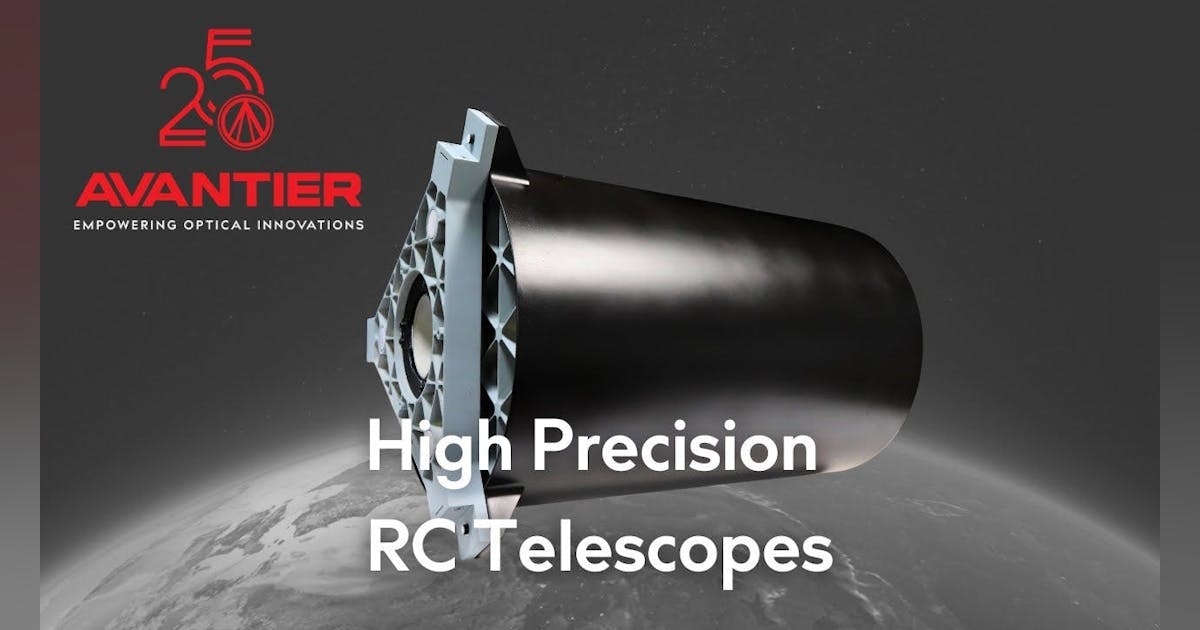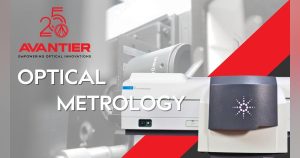High Precision RC Telescopes & Custom Optical Lens Assembly by Avantier: An In-Depth Guide
The evolution of telescope technology has been remarkable since Galileo aimed his basic refractor towards the sky. In contemporary astronomy, be it for an astrophysics researcher, a professional observatory, or a forefront aerospace engineer, the term “Ritchey-Chrétien” (RC) is highly esteemed. For those prioritizing quality, the mentions of “custom optics” and “Avantier” are crucial. This detailed guide reveals what makes Avantier’s high precision RC telescopes remarkable, elaborates on custom optical assemblies, and underscores why these instruments set the standard for excellence.
1. What is a Ritchey-Chrétien (RC) Telescope?
Before extolling Avantier’s innovations, it’s essential to understand the RC design.
- RC telescopes are a type of reflecting telescope utilizing two precisely crafted hyperbolic mirrors—a concave primary and a convex secondary—to gather and focus light.
- Famous for: Minimal optical aberrations, ensuring sharper and truer images over a wide field, devoid of coma and spherical aberrations.
- Compact and mighty: The Cassegrain configuration offers a substantial focal length within a relatively short tube, ideal for observatories, satellites, and advanced astrophotography setups.
The significance? For those desiring clear images of distant galaxies or measuring starlight with scientific accuracy, the RC design is unparalleled.
2. The Avantier Difference: High Precision & Custom Engineering
While the RC design provides a blueprint, Avantier’s workshop transforms it into a masterpiece.
Cutting-Edge In-House Capabilities
- Hyperbolic Mirror Fabrication: Avantier manufactures both primary and secondary hyperbolic mirrors with exceptional precision, a formidable challenge given the difficulty of grinding and polishing hyperbolic surfaces.
- State-of-the-Art Coatings: Reflective and anti-reflective optical coatings are applied in-house to maximize light transmission and minimize glare or losses.
- Precision Alignment: Perfect optical alignment is crucial. Avantier employs advanced alignment and metrology techniques to ensure rigorous performance standards are met.
End-to-End Manufacturing and Customization
Whether the need is one telescope or numerous, Avantier customizes each:
- Material Choices: Optics are crafted from premium substances like Zerodur for thermal stability or silicon carbide for lightweight, space-ready builds.
- Thermal Management: Especially vital in space or demanding terrestrial settings.
- Direct Collaboration: From concept sketches to delivery, Avantier partners with engineers, researchers, and astrophotographers to tailor each instrument to unique requirements.
3. Why RC Telescopes? Key Features & Advantages
Let’s delve into the technical features that elevate RC telescopes, and Avantier’s manufacturing process is highly sought after:
| Feature | RC Telescope (Avantier) Advantage |
|---|---|
| Mirror System | Dual hyperbolic mirrors: negate chromatic aberration, control coma and spherical aberration. |
| Wide Spectrum Range | Handles reflective systems from visible to infrared; no color fringing, ideal for science and deep-sky imaging. |
| Field of View | Flat, sharp image across a wide field—critical for astrophotography, satellites, and wide-angle surveys. |
| Focal Ratio | High, typically f/8 to f/16, offering magnification, reduced field curvature, and superior image flatness. |
| Instrument Integration | Rear focal plane simplifies mounting cameras, spectrometers, or even adaptive optics systems. |
| Compact Size | Cassegrain focus results in a shorter, easily manageable tube—ideal for compact setups. |
| Minimized Maintenance | Solid constructions, advanced coatings, and effective baffling result in years of stable operation. |
In practice: This translates to breathtaking, distortion-free cosmic scenes. RC telescopes are the unsung heroes behind many exceptional astronomical images and research breakthroughs.
4. Custom Optical Lens Assembly: How Avantier Builds Perfection
Custom optical assembly combines science with craftsmanship.
Step-by-Step: Inside Avantier’s Manufacturing
- Requirement Gathering: Collaborations with clients to define use-cases, environments (lab, observatory, orbital), and performance specs.
- Optical Design & Simulation: Engineers utilize advanced CAD and simulation tools to optimize components before production.
- Precision Fabrication: Mirrors and lens elements crafted with nanometer precision; surfaces are meticulously polished, ground, and tested.
- Coating Application: Specialized coatings are applied in controlled settings, tailored for target spectral bands.
- High-Tolerance Alignment: Assembly in cleanrooms with laser precision, aligning all optical paths.
- Final Integration & Testing: Full system assembly and validation under authentic or simulated conditions. Only after these stages does it exit the shop.
Avantier’s process exceeds off-the-shelf products: Each assembly is purpose-engineered for the user’s mission, such as deep-space imaging, surveillance, atmospheric sensing, or rigorous scientific analysis.
5. Real-World Applications & Success Stories
Custom-built RC telescopes by Avantier are pivotal in many modern technological achievements:
- Astrophotography: From backyard setups to cover images, Avantier’s RCs regularly deliver sharp cosmic views free of coma.
- Space Missions: Many satellites depend on RC telescopes for imaging, star tracking, and scientific analysis, where precision is mission-critical.
- Aerospace R&D: Engineers use custom assemblies for testing, calibration, and advanced imaging.
- Scientific Research: Universities and labs leverage Avantier optics for spectroscopy, photometry, and pioneering experiments.
“Avantier’s RC telescopes have allowed our team to capture nebular details we deemed impossible—from crisply resolving starfields to uncovering faint galaxies. It’s transformative.”
— Dr. A. I. Skywatcher, Research Astronomer
6. Common Questions & Expert Tips
Q: How does a custom RC telescope differ from mass-produced models?
A: Avantier’s custom RC telescopes are tailored to your specific needs—mirror size, coatings, electronic integration, thermal requirements—delivering optimal performance for unique missions.
Q: How do I select the correct focal ratio?
A: Higher focal ratios (f/12–f/16) are advantageous for planetary or lunar work, whereas f/8–f/10 offers a balance for deep-sky imaging. Avantier guides clients to the best design for their applications.
Q: Typical lead time for a custom assembly?
A: Lead times vary based on complexity, yet direct engineering support often reduces the wait—typically a few months from specification to delivery, facilitated by internal processes and stringent quality control.
Expert Tip: Coatings are crucial! Choosing the correct optical coatings can enhance system efficiency, especially important for non-standard wavelength tasks (e.g., UV, IR).
7. The Human Side: Who’s Behind Avantier?
Every optic is crafted by passionate engineers, problem solvers, and stargazers.
- The Avantier Team: A blend of scientists, engineers, and tinkerers who share a love for optics and astronomy.
- Collaboration Culture: Avantier thrives on partnerships, aligning with the missions of a diverse clientele including aerospace agencies and educational institutions.
- Legacy of Success: With a history of collaborating with entities like NASA contractors, Avantier’s precision resonates worldwide.
8. Trends & the Future: What’s Next for RC Telescopes?
- Miniaturization: As satellites become smaller, custom RCs are adapting to compact formats like CubeSats, offering world-class optics in compact sizes.
- Multi-Wavelength Integration: Custom optics for simultaneous UV, visible, and IR imaging are unlocking new possibilities in planetary science and surveillance.
- Automated Alignment & Smart Control: New telescope models are embracing auto-collimation, remote focus, and cloud functionalities.
Pop Culture Moment: RC telescopes might not headline blockbuster films yet, but they do populate NASA’s streams and social media worldwide. Your next custom setup may capture the latest viral galaxy image!
9. Take the Next Step: How to Collaborate with Avantier
If this guide excites you about obtaining diffraction-limited stars or sharp planetary views, here’s how to proceed:
- Project Planning: Define your goals and needs—Avantier’s engineers appreciate challenges.
- Direct Contact: Visit their solutions page, email, or schedule a call to begin planning your telescope or optical assembly.
- Iterative Development: Prepare for collaboration—prototypes, tests, and revisions until expectations are met.
Final Thoughts
Custom RC telescopes by Avantier bridge art, science, and engineering, facilitating discovery. When excellence, reliability, and precision are essential, bespoke optical solutions are unrivaled.
Ready to explore further? The universe awaits. With Avantier’s custom optical assemblies, your vista will be clearer than ever.
For technical specifications, application notes, or consultations, visit Avantier’s website or contact their engineering team directly. Dream big—the cosmos is within reach.













